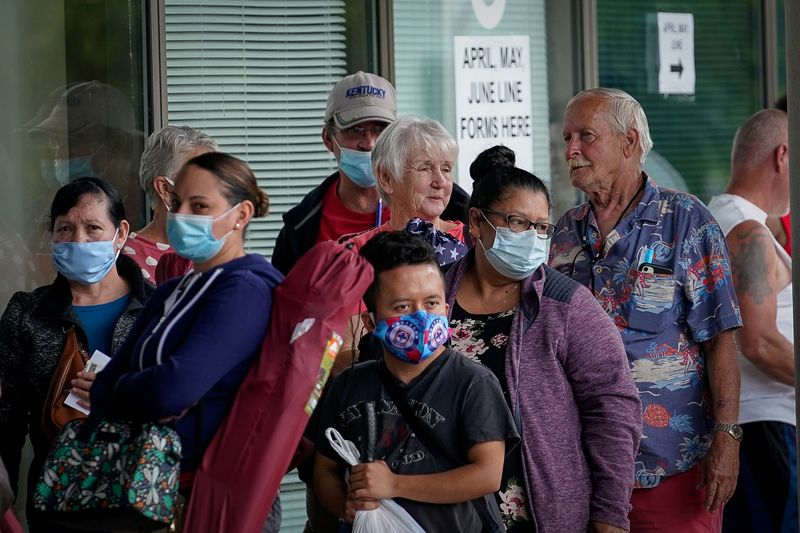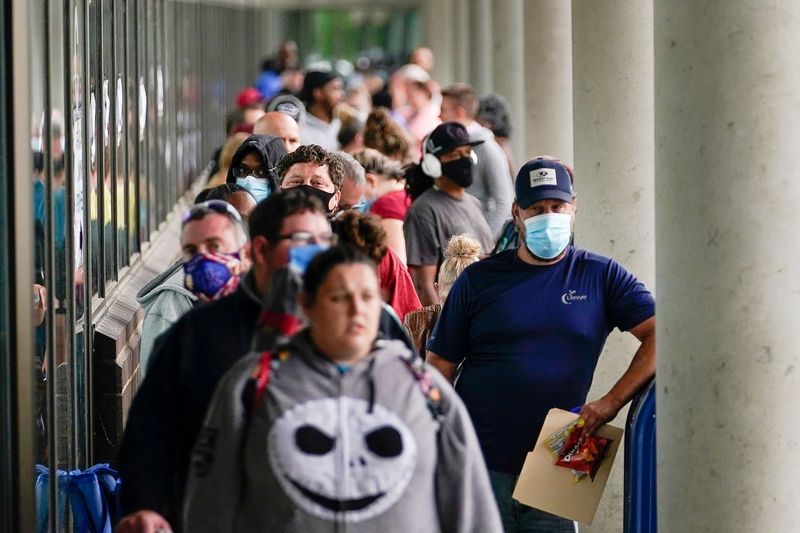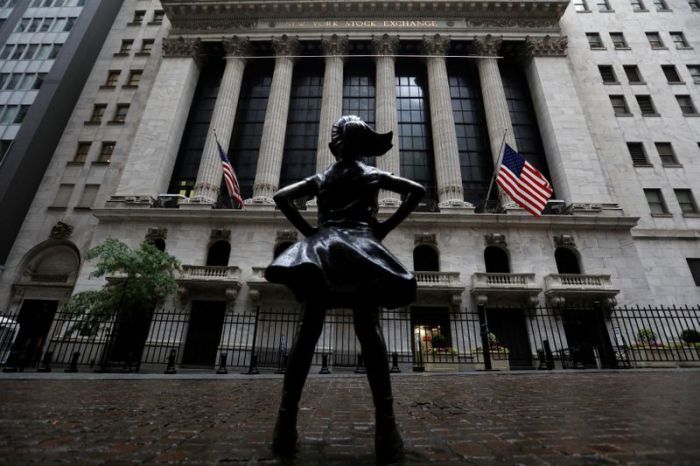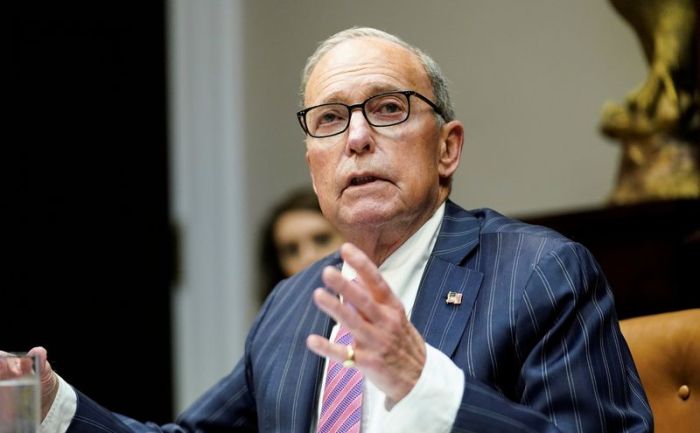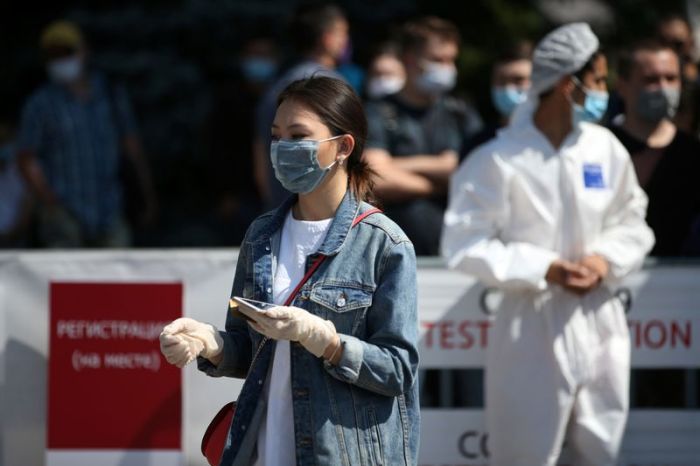WASHINGTON (Reuters) – The number of Americans filing claims for unemployment benefits fell moderately last week as a second wave of layoffs partially offset hiring by businesses reopening, suggesting the labor market could take years to recover from the COVID-19 pandemic.
Other data on Thursday reinforced expectations the economy would contract in the second quarter at its deepest pace since the Great Depression. Though orders for key capital goods rebounded in May, the increase recouped only a fraction of the prior declines. The goods trade deficit widened sharply last month as the respiratory illness disrupted trade further.
“All is not well in this economy,” said Chris Rupkey, chief economist at MUFG in New York. “While it counts as good news that businesses are ordering more equipment in May as the states reopened, the second wave of the pandemic may keep companies cautious in the months ahead when it comes to making new investments in the country’s future.”
Initial claims for state unemployment benefits fell 60,000 to a seasonally adjusted 1.48 million for the week ended June 20, the Labor Department said. There was a jump in claims in California, which together with Texas and Florida, has seen a surge in novel coronavirus cases. Economists polled by Reuters had forecast 1.3 million applications in the latest week.
Claims have dropped from a record 6.867 million in late March, but they remain more than double their peak during the 2007-2009 Great Recession. The report, the most timely data on the economy’s health, also showed 30.6 million people were receiving unemployment checks in the first week of June, about a fifth of the labor force.
Businesses in many states reopened more than a month ago after shuttering in mid-March to try to slow the spread of COVID-19. Companies are hiring, but others are cutting jobs at nearly the same pace.
The economy slipped into recession in February. From manufacturing to the transportation, retail and leisure and hospitality industries, companies are restructuring to adapt to a vastly changed landscape, leading to layoffs and bankruptcies.
State and local governments, whose budgets have been squeezed by the COVID-19 fight, are also cutting jobs.
High unemployment is undercutting demand, with ripple effects on business investment, which contracted in the first quarter at its sharpest pace since mid-2009.
A separate report from the Commerce Department showed orders for non-defense capital goods excluding aircraft, a proxy for business spending plans, increased 2.3% in May after dropping 6.5% in April. These so-called core capital goods orders are 5.6% below pre-pandemic levels.
The surge in coronavirus infections threatens the nascent improvement in business investment. Energy companies slammed the brakes on returning staff to their Houston offices as COVID-19 cases soared and top hospitals warned they could soon run out of beds for the most severely ill patients.
The pandemic is upending the flow of goods. In another report, the Commerce Department said the goods trade deficit jumped 5.1% to $74.3 billion in May. Exports tumbled 5.8% while imports decreased 1.2%. With imports declining again, retailers and wholesalers drew down inventories.
Economists expect GDP could shrink at as much as a 46% annualized rate in the second quarter. The economy contracted at a 5% pace in the January-March quarter, the deepest downturn since the Great Recession.
Major U.S. stock indexes were trading slightly higher, led by gains in shares of financial and energy companies. The dollar <.DXY> was higher versus a basket of currencies. U.S. Treasury prices rose.
STALLED PROGRESS
The number of people receiving benefits after an initial week of aid fell 767,000 to 19.522 million in the week ending June 13. These so-called continued claims, reported with a one-week lag, are down from a record 24.912 million in early May.
Economists credit the drop to the government’s Paycheck Protection Program, which gives businesses loans that can be forgiven if used for wages.
The continuing claims data covered the week that the government surveyed households for June’s unemployment rate.
The jobless rate has been biased down since March by people incorrectly misclassifying themselves as being “employed but absent from work.”
Without this problem, which the Labor Department is working to correct, the unemployment rate would have been 16.3% in May instead of 13.3% and would have peaked at about 19.7% in April.
The government has expanded eligibility for unemployment benefits to include the self-employed and independent contractors who have been affected by the pandemic, including through lost employment, reduced hours and wages.
These claims are not included in the regular state unemployment insurance, understating the magnitude of labor market distress. About 33 million people are currently claiming benefits under all programs.
“These claims foreshadow a June jobs report that may fail to meet the high expectations set by the May report,” said Andrew Stettner, senior fellow at The Century Foundation in New York.
(Reporting by Lucia Mutikani; additional reporting by Gary McWilliams in Houston; Editing by Andrea Ricci, Chizu Nomiyama and Paul Simao)

